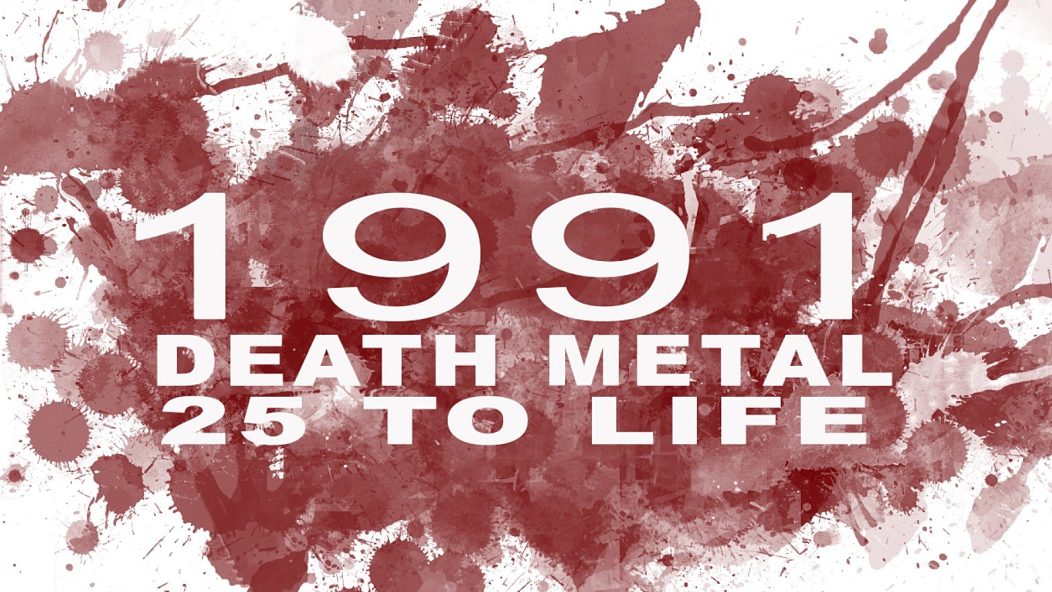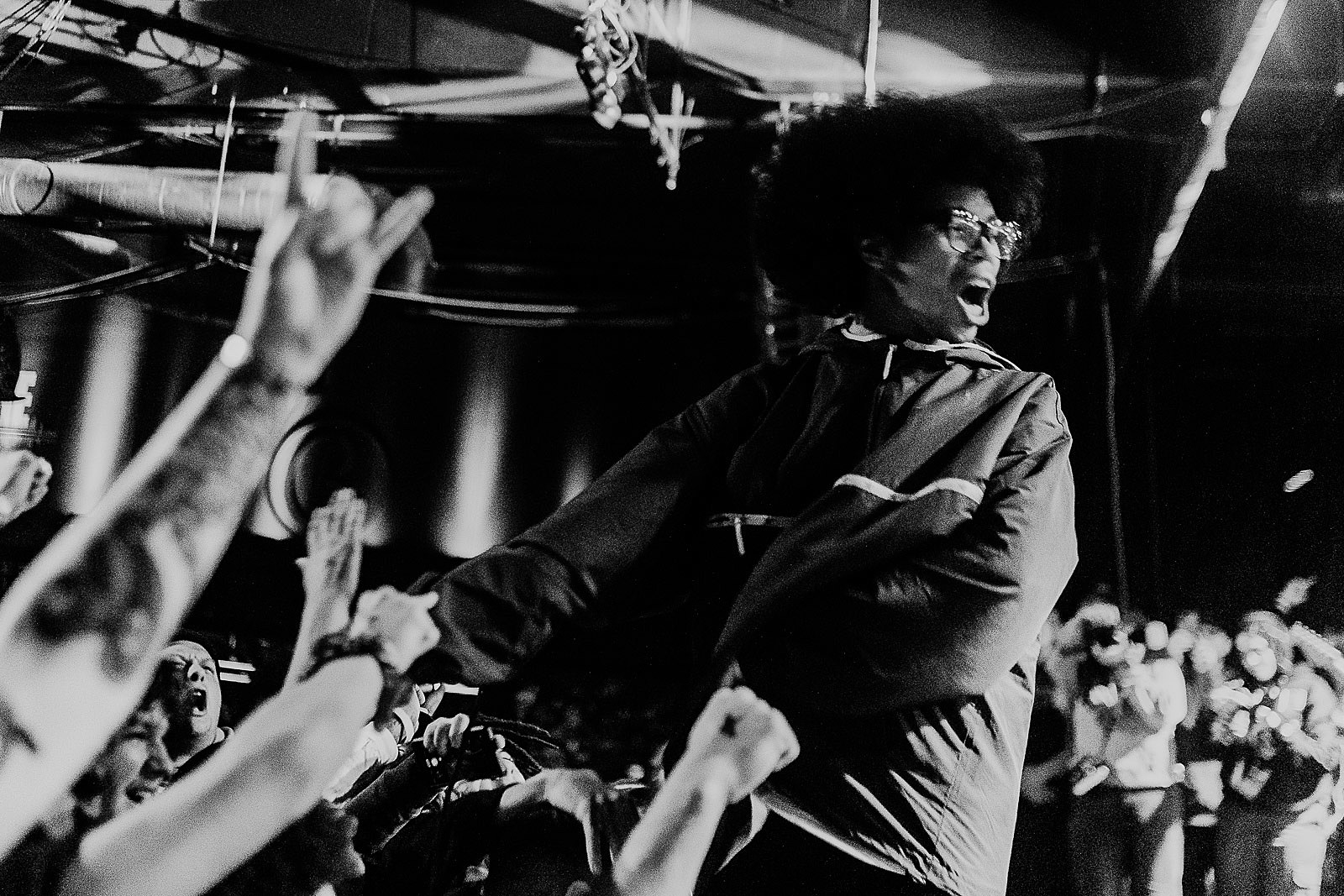
Death Metal 25 to Life: May - July 1991

…
Welcome to the second day of our four-day death metal extravaganza. We covered seven albums in day one, so these next three will be six each, not only because we needed as even a split as possible, but also, y’know, the number of the beast and all. Today’s bevy of heavy sees brings more HM-2 stompin’ Swedeath, the first Finnish DM album and some good ol’ Jersey grit.
–Greg Majewski
…

…
Dismember – Like an Everflowing Stream (May 29th)
In his book Swedish Death Metal, Daniel Ekeroth makes the point that, unlike their counterparts in Florida, the Swedish HM-2 crowd grew out of the local punk scene. They came to metal later in adolescence, and kept the pieces of hardcore that suited them: D-beats, breakdowns, abbreviated song structures. These unifying elements render most of the HM-2 bands pretty same-sounding, but also kept their songwriting tight. The Americans veered off unexpectedly into creepy-crawly atmosphere, into protracted sludge sections, into unexpected but often kinda-boring territory. The Swedes? All killer no filler, and to my mind no band embodied that kind of no-nonsense approach better than Dismember. No song on Like an Everflowing Stream overstays its welcome. No song skips a neck-snapping riff section, and no song ignores Fred Estby’s utter command of the drum kit. Grounded in a burly-but-clear production job (maybe the best out of Sunlight Studios though I’m sure some Entombed fanatics will disagree) Dismember applied punk fundamentals to death metal’s sonic palate in such a way that their brief forays into deeper complexity still fit into the greater whole. On “Dismembered”, you can hear them reaching for the kind of interlocking instrumental flow that made Metallica and Iron Maiden the genre’s gold standards in 1984 (thanks for the leads, Nicke Andersson), but neither of those bands ever dipped into a gorilla-fisted mosh groove the way Estby and company did on “Sickening Art.”
–Joseph Schafer
…
…

…
Ripping Corpse – Dreaming with the Dead (June 1st)
There’s a pejorative term used to describe metal — usually of the deathly variety — that packs too many riffs into confined song structures: riff salad. The idea is that the riffs become nondescript, impossible to tell apart from one to the next. Erik Rutan employs a metric shit-ton of riffs on Ripping Corpse’s one-and-done LP Dreaming With the Dead, but somehow they’re all winners. The Jersey tech-death/thrash pioneers beat back repetition like it stole their Piece of Time longsleeve, cycling hyper speed picking with straight-up groove on “Glorious Depravity” and screeching lead work on “Feeling Pleasure Through Pain.” Dreaming’s stop-on-a-dime tempo shifts can be startling even for those with extensive death metal experience. The real bummer: it’s still a relatively unheard gem even among intermediate-to-experienced death-heads.
The band would go on to record one EP a year later and split up the next, Rutan joining Morbid Angel on second guitar on Domination before forming the blisteringly fast Hate Eternal. The rest of the members’ projects read like a who’s who of Garden State extremity, including Dim Mak and Burnt By the Sun. Special mention goes to the lyrics, which balance the compulsory Cthulhu weirdness and gore with outwardly political material, such as on “Chugging Pus”: “Distinguished senator drank too much…The honorable mayor is now a bust for smoking crack.”
–Greg Majewski
…
…

…
Convulse – World Without God – (July)
In retrospect, the deep low-end pummel of Nokia’s Convulse was predictable. Finland is the country that gave us funeral doom after all, so it only makes sense that its first foray into death metal would favor the crawl as much as the blast. World Without God’s most immediately recognizable trait is its guitar tone, an asphalt-thick morass that suffocates most of the record, competing only with frontman Rami Jämsä’s caveman grunt. While World Without God is a sorely underrated entry in the Golden Era death metal canon, its influence can be felt in modern bands like Vastum who embrace the sludgy tone and tempo shifts from zombie shamble to driving double bass on “Resuscitation of Evilness” (best song title!) and the pit-ready title track. Finnish death metal would get a significant shot of sophistication and folklore with Amorphis over the next few years, but in ’91, Convulse made it filthy.
–Greg Majewski
…
…

…
Massacre – From Beyond (July 1st)
Even though Massacre’s early songs made their way all over the world (Napalm Death later acknowledged the influence with a cover of the demo track “Clangor of War”), their first full-length From Beyond only came into existence a full five years after recording their first demo. You can thank Death for that. When Chuck Schuldiner called, you picked up the phone. By the time From Beyond was finally recorded in 1991, the material had aged and ripened. The arrangements were trimmed of fat and the performances were busy and tight. Only the opening track “Dawn of Eternity” clocks in over five minutes, the rest of the tracks follow non-indulgent structures and exit before boredom kicks in. Rick Rozz’s thrashy riffs proudly look backward in metal history, utterly refusing to look at guitar playing beyond the release of Pleasure to Kill. The galloping bounce in “Dawn of Eternity” is a 1984 Ruthie’s Inn pit-starter, and “Cryptic Remains” derives much of its fun from its proudly ignorant chunk-chunk-chunks.
Hints of death metal’s potential for gonzaloid instrumental antics creep up here and there; the title track blazes with wild energy ticked off by Bill Andrews’ metronomic pulse and “Succubus” features tremolo strafing runs that could slap an unsuspecting Norwegian black metal band upside the head. Even though the riffs and songs were firmly rooted in the past, that did little to diminish their quality. The likes of “Corpse Grinder” and “Biohazard” are plain fun, endlessly moshable death metal. From Beyond is backward-thinking and permanently vintage. It’s also an unadulterated joy to crank.
–Avinash Mittur
…
…

…
Morbid Angel – Blessed Are the Sick (July 5th)
Given the dreadfulness of Morbid Angel’s latest offering, it’s easy to forget just how potent they were throughout death metal’s adolescence. Their five album run between 1989 and 1998 is a nearly flawless streak, and showed that America was more than capable of producing big-budget death metal. That was the difference between Morbid Angel and their other counterparts from the United States; their ambition extended beyond the local scene or their direct influences.
It was more obvious with the over-the-top showcase of virtuosity heard on Altars of Madness or Covenant’s major-label polish, but Blessed Are the Sick laid claim to a similar scope. It might be the most varied record of Morbid Angel’s career; “Fall from Grace” opens with a molasses-like crawl, but Pete Sandoval’s off the rails beats aren’t far away. The band even enters into some downright nasty swings at the 2:10 and 3:28 marks, moments that are up there with Morbid Angel’s very meanest. Wild tempo shifts are the order of the day on Blessed Are the Sick, where gothic organs in “Doomsday Celebration” leads into the manic blasting of “Day of Suffering,” which is followed by the title track’s grooving, agonizingly slow march–a song that ends with a wind instrument outro of all things. Unlike the shenanigans heard on Ilud Divinum Insanus, these experiments work. The classical guitar and piano pieces, “Desolate Ways” and “In Remembrance” respectively, are pretty but they’re also downright creepy while tracks like “Thy Kingdom Come” and “Unholy Blasphemies” are zero-bullshit ragers. The variety heard here enriches Blessed Are the Sick, and develops its schizoid personality well. Morbid Angel’s second album may lack the focus and awe-inspiring fury of their most memorable works but it’s the finest demonstration of their musicianship on record, and a necessary document of their early ’90s American death metal domination.
–Avinash Mittur
…
…

…
Edge of Sanity – Nothing But Death Remains (July 9th)
Nothing But Death Remains is as important for what it represents as for the music itself. Before Witherscape, before his work with Katatonia and the Stockholm scene at large, and five years before his single-song concept album masterpiece Crimson, Edge of Sanity mastermind Dan Swanö was just another Swedish death metal dude trying to write some brutal tunes. EoS’ debut plays like exactly that: a first attempt from a band with a budding superstar finding their voice. It can be tough to discern the proggy and increasingly ambitious excursions Swanö and Co. would embark upon on future albums like Purgatory Afterglow, but listen carefully and you’ll hear hints of the unorthodoxy to come. The weird tempo shifts and seemingly off-time rhythms of “Tales…” and “Decepted by the Cross” (more death metal English!) mesh with instantly catchy songs like “Human Aberration.” It’s that melding of experimentation with hooks that’s granted Swanö comparison to Chuck Schuldiner, another enigmatic figure in death metal with a reputation as a perfectionist. Not bad company to be in even on a first crack at an album.
–Greg Majewski
…
…
Old School Death Metal Week continues: Part 1, Part 3, Part 4










